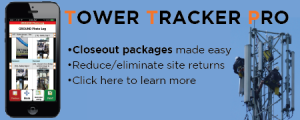Podcast: Play in new window | Download | Embed
Subscribe: Apple Podcasts | RSS
Carrier Aggregation and Private LTE

Hey, guess what? Remember when I talked about LAA, LTE-U, and CBRS, well, we’re almost there! That’s right, all those add-ons that we talked about over a year ago may finally be released. The new CBRS spectrum in the US creates new opportunities. It will be a game changer once the FCC decides what will happen with the spectrum. I just want to deploy, something they are delaying even longer, over a year, come on, release something! Sorry, it’s just that government holds back the economy by trying to improve it, this is a classic example. It happens in every administration.
Let’s look at 2 things, 1) a way to supplement what the carriers have, and, 2) a private LTE network. While you think this is just another  system, it’s on the road to 5G. That’s right, we need spectrum, and there is plenty of it. Where? I’ll tell you if you have the nerve to read on.
system, it’s on the road to 5G. That’s right, we need spectrum, and there is plenty of it. Where? I’ll tell you if you have the nerve to read on.
LAA – Licensed Assisted Access
First, it’s the ISM spectrum, you know it better as the Wi-Fi spectrum. It could be 900MHz, 2.4GHz, 5.8GHz or even 60GHz. All that spectrum that Wi-Fi could operate in, but they primarily use 2.4GHz and 5.8GHz. Now we can run LTE in that spectrum; it’s called LTE-U and Qualcomm created MuLTEfire to allow LTE to run without a core. You heard me, an independent LTE-U hotspot that the carriers and your device will like a lot.
LTE-U is in the spectrum of Wi-Fi but is true LTE. It’s in the unlicensed band. MuLTEfire is a stand-alone LTE unit. While that doesn’t mean much now it will when all the devices have it, like your smartphone. Learn more here, https://www.multefire.org/about/ if you’re interested in learning more. Maybe you want to read a book, available on Amazon with my affiliate link, found here, where you can learn more about LTE in unlicensed bands. It’s going to be great when we can use LTE for everything. I see this as a great thing. RCR wrote about it last year, https://www.rcrwireless.com/20170530/network-infrastructure/what-is-multefire-tag6-tag99. It’s really a great thing.
Why? I am glad you asked. You see the carriers can use LTE-U to gain bandwidth with their current LTE spectrum. They use something called LAA, which I wrote about in the past, but now it’s right around the corner. What’s that? You don’t remember anything about LAA, let’s have a flashback! LAA, which is soon to be used by the primary carriers to build up throughput, is Licensed Assist Access. That uses carrier aggregation to aggregate, (make all the RF carriers look like one big pipe), create separate streams that all combine in the end users’ device to make the throughput go through the roof. We are talking about throughput closer to 1Gbps to the device. Hell, I would settle for 100Mbps to happen.
There is also LWA, Licensed Wi-Fi Aggregation, same as the above but it uses Wi-Fi to aggregate. Now, you’re wondering why LWA isn’t the preferred choice, right? I would say because it’s so much work to get Wi-Fi to work with LTE. Seriously, those 2 formats are not playing well together. They have delay differences and to be honest the carriers are sick and tired of trying to make it work. I will give T-Mobile a lot of credit because they seemed to have a solid way to make it work. I am not sure why, but they don’t seem to push it anymore, not sure why.
So, what is the better choice? LAA using the licensed LTE with the unlicensed LTE-U. LTE is a great format baby! I love it, in fact, 5G will love it too, it will be the foundation for 5G, even with the NR coming out. That’s right! The carriers will be rolling out LAA very soon. They have faith in it. Carrier aggregation rocks! It will allow all of them to unify LTE is all bands, including CBRS.
Please! Follow me on WordPress, Amazon, Twitter, LinkedIn, or Facebook.
Just click and follow! Thank you!
Get all your updates via email!
CBRS – Citizen’s Broadband Radio System
That’s right, CBRS rocks! It will allow you, the end-user, to build a lightly licensed spectrum, like 3.5GHz here in the USA, and build your own LTE network along with the LTE-U. CBRS is in the 3.5GHz spectrum, and it is lightly licensed thanks to an advances licensing system that uses ASA to assign spectrum. It works a lot like your DHCP server only for spectrum. How cool is that?![]()
When I interviewed both Art King (of SpiderCloud) and Steve Martin (of Ruckus) they helped me understand how awesome the CBRS spectrum is going to be for the enterprise user as well as the wireless internet service provider, (WISP). It will open new doors and allow WISPs everywhere to align with the carriers if they want to aggregate the carrier.
But wait, there’s more! The carriers will be using this spectrum as well. In fact, T-Mobile is a major reason the delay is happening. They want to buy more of the spectrum and hold onto it much longer. I’m okay with that, but why don’t they ask the FCC to get off their ass and release something already? They don’t seem to be in a hurry. I guess because they are rolling out 600MHz now. That is a major effort on their part. I appreciate it because it brings a lot of work to the deployment industry, and GOD knows we need it. You heard me! It’s feast or famine in this industry. Now I am straying off topic, sorry.
CBRS is also LTE, and it’s something that the carrier separately ![]() wants to roll out as part of their small cell model. It’s perfect spectrum for small cells. Lower power, smaller coverage area, and new spectrum that can be rolled out anywhere. I love it and so will you when you get your own small cell in the CBRS spectrum.
wants to roll out as part of their small cell model. It’s perfect spectrum for small cells. Lower power, smaller coverage area, and new spectrum that can be rolled out anywhere. I love it and so will you when you get your own small cell in the CBRS spectrum.
Hey, guess who else will love it? Public safety, utilities, small business, enterprise, and anyone who wants to extend their coverage. I know, Wi-Fi is nice, but the LTE format will open new doors, and lightly licensed spectrum will help security. I can’t wait until every smart device has this spectrum in it.
Carrier Aggregation made this possible!
I would say thank you to the OEMs for coming out with carrier aggregation. It is the sole feature that made this possible. It is a remarkable technology that the carriers are currently using only in the licensed spectrum. They are currently using this technology only on their own licensed channels. Some of them on multiple bands across spectrum or maybe in the same spectrum. Here’s the deal, they can expand beyond their own spectrum, how cool is that. They may want players, so keep your ear open, and maybe they will want partners. It could happen.
What about the devices?
Nokia has already released their small cells. Ruckus has a CBRS unit.  SpiderCloud has their unit. There you go, real units in the real world just waiting for you to deploy! Deploy, deploy, deploy! Do it ASAP. We’re still waiting on more UE devices to get the spectrum, but it’s coming, have faith, my friends.
SpiderCloud has their unit. There you go, real units in the real world just waiting for you to deploy! Deploy, deploy, deploy! Do it ASAP. We’re still waiting on more UE devices to get the spectrum, but it’s coming, have faith, my friends.
How can this help you?
OK, it’s all about you! I can explain it to the industry you’re in. Let’s look below at the list to understand where you fit in.
- Enterprise users – you will be able to build something much more secure than Wi-Fi. A network in the CBRS will be lightly licensed and something that most users will not have access to. You could dedicate it to your network and have specific devices with that spectrum to allow low latency and dedicated spectrum for whatever you want to use it for. Security and dedicated spectrum would allow you to do secure functions without running cables everywhere.
- ISPs – If you’re an internet service provider you have an option to supplement your income by striking a deal with any carrier to use LAA on LTE-U or CBRS to aggregate the carriers licensed LTE with your spectrum. If you have already built it, then they may see value in what you have. Why not?
- Installers – if you have the opportunity then you can install these devices indoors and out. On poles usually, they are low power and will reach the end-user much like Wi-Fi on these will be small cells. The CBRS will be rolling out everywhere. While the carriers want a higher power unit the reality is this will be an extension of the network and should work well within the realm of 5G.
- Backhaul – Fiber providers, backhaul providers, and the router companies can make a play to gain market share in the smaller business groups.
- Carriers – the carriers will look at this as the icing on the cake. They can extend coverage by partnering with smaller users for a flat fee or by reciprocating services. The chances are good that they will want to build their own smaller networks where they can, but that whole idea here is that they don’t want to increase CapEx. That’s why the partnership to extend coverage looks natural and attractive. FYI – this is cheaper than putting in licensed radio heads.
- Building and venue owners – if you looked at DAS as the saving grace, look at this as an easier way to do upgrades. This is an easy way to expand coverage by running CAT 5 or CAT 6 to the new small cell areas. By putting in LTE-U or CBRS, you can quickly and easily extend coverage. It’s a natural alternative to putting in more licensed radio heads.
- OEMs and distributors – you can move product. Nokia, SpiderCloud, and Ruckus have already jumped on the bandwagon with products for LTE-U and CBRS that are carrier grade. They all are targeting the user mentioned in this report. Do they know something you don’t? Not if you read the blogs at Wade4Wireless.com!
- Public Safety – here is a market that could really benefit from I know they are all waiting for the AT&T deployment, sorry, I meant to say FirstNet roll out. The thing is, they will have a choice between AT&T, sorry, I mean FirstNet and Verizon’s system. It all depends where they are at because the coverage varies that much and while the budget matters, they really need to have coverage first. If the coverage is there, then they can look at cost. They may rely on their own networks like they do today. If that is the case, they may want to try to deploy their own broadband network and put it where they need it.
- Utilities – I see the utility market needing this for their smart meters and remote connections. They can use something like this to reach all the area that the carriers can’t or at least as an alternative to paying carriers for their IOT systems. Then they may be able to expand the network to serve more than the meters by allowing end users to put their IOT devices on these networks. It is a viable alternative.
- Cable companies – I see the cable companies rolling out LTE-U and CBRS because it’s so cost-effective and it fits into their current model. Granted, they love Wi-Fi, but they will see great value in rolling out LTE-U and CBRS if they can partner with the carriers. They could use it as a bargaining chip when they want to become an MVNO, like Comcast, with the large What leverage they will have when they can use their network to reach millions of their customers with an LTE network of their own. Awesome!
- Autonomous vehicles – I don’t know who will use this, but it is a viable way to communicate with vehicles in the urban areas. It would have to be a dense network, but it could supplement the carrier’s network.
- Google – yes, Google has a lot to gain with their Loon network and to replace the FTTH network which we all thought would be our savior from the choices we have now. One thing that Google learned is that it costs a lot of money to deploy fiber. It’s a lot more than what you see in the data center. If they use this technology like they say they will, then we will have our new ISP competitor that could make a difference overnight, well, in a few years maybe.
- The workforce – I see the workforce benefiting from this because we are going to have to engineer and deploy the systems for all the potential service providers. Let’s build the best networks we can. Let’s build the ecosystem beyond the carriers to the smaller business owners. We can make a difference by helping cities become smart, utilities being connected, public safety has a broader reach and more partners, and the carriers are relying on individuals beyond their strong list of partners. We have the opportunity to go beyond the “norm” and into an open distribution system. We can do it, so let’s make the difference today!
Summary:
Do you believe that this could be a game changer? I do! I think that this is going to be the thing that pushed the outer users to 5G and includes them as part of the ecosystem. It’s more than being a customer. It’s becoming a player in your niche. Finally, in wireless, we can all be players in the infrastructure network. We have become an active user and builder of the wireless networks beyond Wi-Fi. It’s exhilarating to me, and I look forward to having all of you as partners in this venture!
Resources:
- https://wade4wireless.com/2017/07/25/art-king-teaches-cbrs/
- https://wade4wireless.com/2017/07/31/cbrs-deep-dive-with-steve-martin/
- https://wade4wireless.com/2015/09/08/lwa-laa-lte-u-and-wi-fi/
- https://wade4wireless.com/2017/12/04/what-is-carrier-aggregation/
- https://wade4wireless.com/2016/02/01/unlicensed-lte-multefire-overview/
- https://wade4wireless.com/2015/08/10/wi-fi-lte-lte-u-and-aggregation/
- https://wade4wireless.com/2015/06/29/small-cell-deployment-prep-notes/
- https://www.thinksmallcell.com/Technology/what-is-laa-and-how-does-it-affect-small-cells.html
- https://wade4wireless.com/2017/09/26/building-your-own-private-lte-network/
- https://networks.nokia.com/products/td-lte/CBRS
- https://en.wikipedia.org/wiki/Multefire
- http://www.federatedwireless.com/tag/cbrs/
Be smart, be safe, and pay attention!
Deploy! Deploy! Deploy!
See Ya!
Go crazy and follow me on WordPress, Amazon, Twitter, LinkedIn, or Facebook.
Just click and follow! Thank you!
Get all your updates via email!
Sign-up to get all your updates!
The foundations below do beautiful work, helping families in their time of need. Climbers often get seriously injured or die on the job. The foundations below support those families in their time of greatest need!








 Putting together your smart city tech solutions, planning, development, and more….TechFecta! Guiding you to a better plan through consulting!
Putting together your smart city tech solutions, planning, development, and more….TechFecta! Guiding you to a better plan through consulting!













